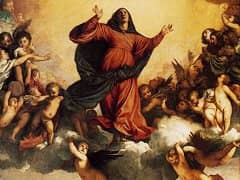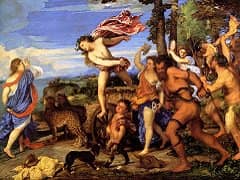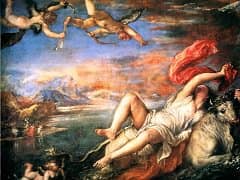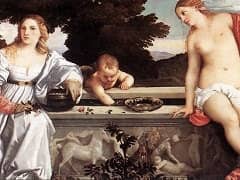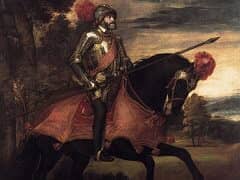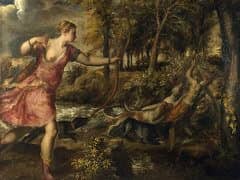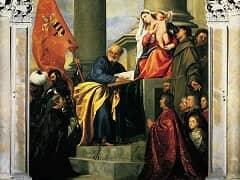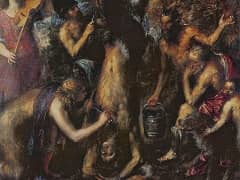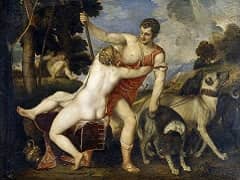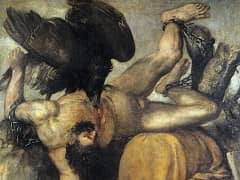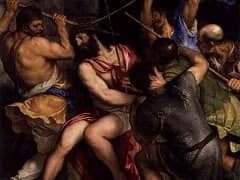An Allegory of Prudence, 1565-70 by Titian
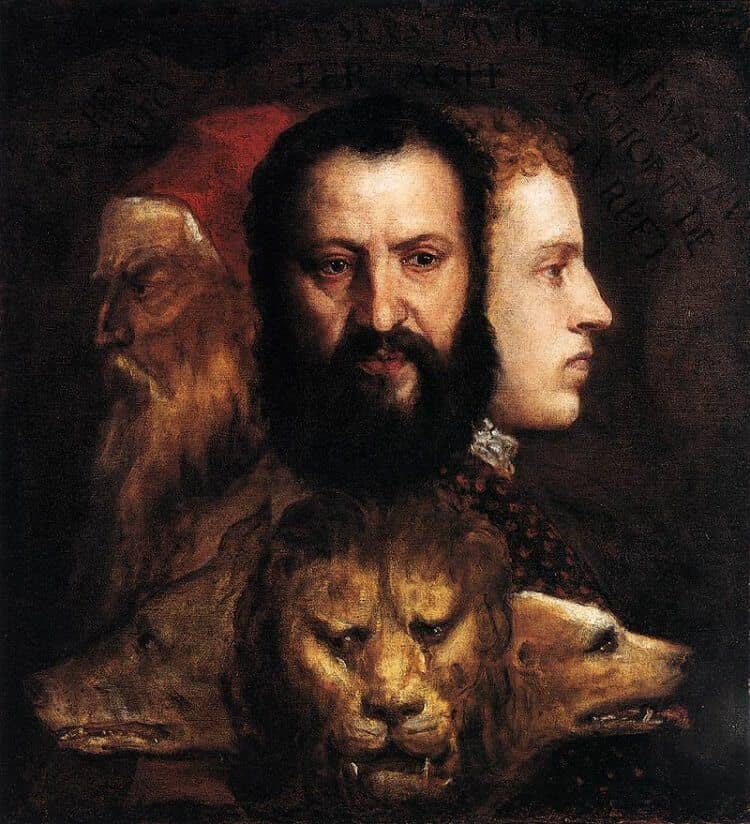
The iconography of this emblematic triple portrait - probably representing Titian himself, his son Orazio (1525-1576), and his nipote Marco Vecellio (1545-1611) - has been the subject of several studies by Fritz Saxland, particularly, Erwin Panofsky. The inscription, explicitly associated with the three heads, declares the meaning of the image: EX PRAETERITO/PRAESENS PRVDENTER AGIT/IN FVTVRA[M] ACTIONE[M] DETVRPET ("From the p ast, the present acts prudently, lest it spoil future action"). Thus articulating the temporal relationship of the three ages of man represented by the portraits, the motto further comments on the corresponding three animal heads - wolf, lion, and dog. This tricephalous creature, in association with an encircling serpent, originated as an attribute of the Egyptian god Serapis and became an accepted symbol of time: the lion's head, according to the fifth-century writer Macrobius, "denotes the present, the condition of which, between the past and the future, is strong and fervent by virtue of present action; the past is designated by the wolf's head because the memory of things that belong to the past is devoured and carried away; and the image of the dog, trying to please, signifies the outcome of the future, of which hope, though uncertain, always gives us a pleasing picture."
Beyond the images of the three ages of man and the zoomorphic triad, however, there is as well a temporal dimension to the artist's technique and handling of the medium itself. While the three portraits, rotating, as it were, toward the future, emerge from the darkness of the past to the bright hope of youth, a corresponding handling of paint gives increasing physical palpability to the heads. On the dark tonal ground, the profile of the aged master is only faintly suggested by the dry brush; the vigorous frontal image of the present, partially shadowed, is rendered with a more direct and assertive stroke; and the young face looking toward the future is most brightly illuminated and executed with the thickest impasto. The young profile, enjoying the heaviest texture of paint, rests upon a solid bust of its own, the white collar and specked maroon shirt adding further to its material substance. Our full experience of time thus gains a new dimension through the remarkable eloquence of Titian's brush. Once again, the master has naturalized an abstraction, endowing a symbol with life.
Enigmatic and unusual among Titian's portraits, this triple image may have served as an allegorizing cover for another picture or for a kind of wall safe. In any case, as Panofsky has insisted, the painting must be viewed as a document of the most personal nature, an expression of dynastic hope - a hope that would never be realized.

